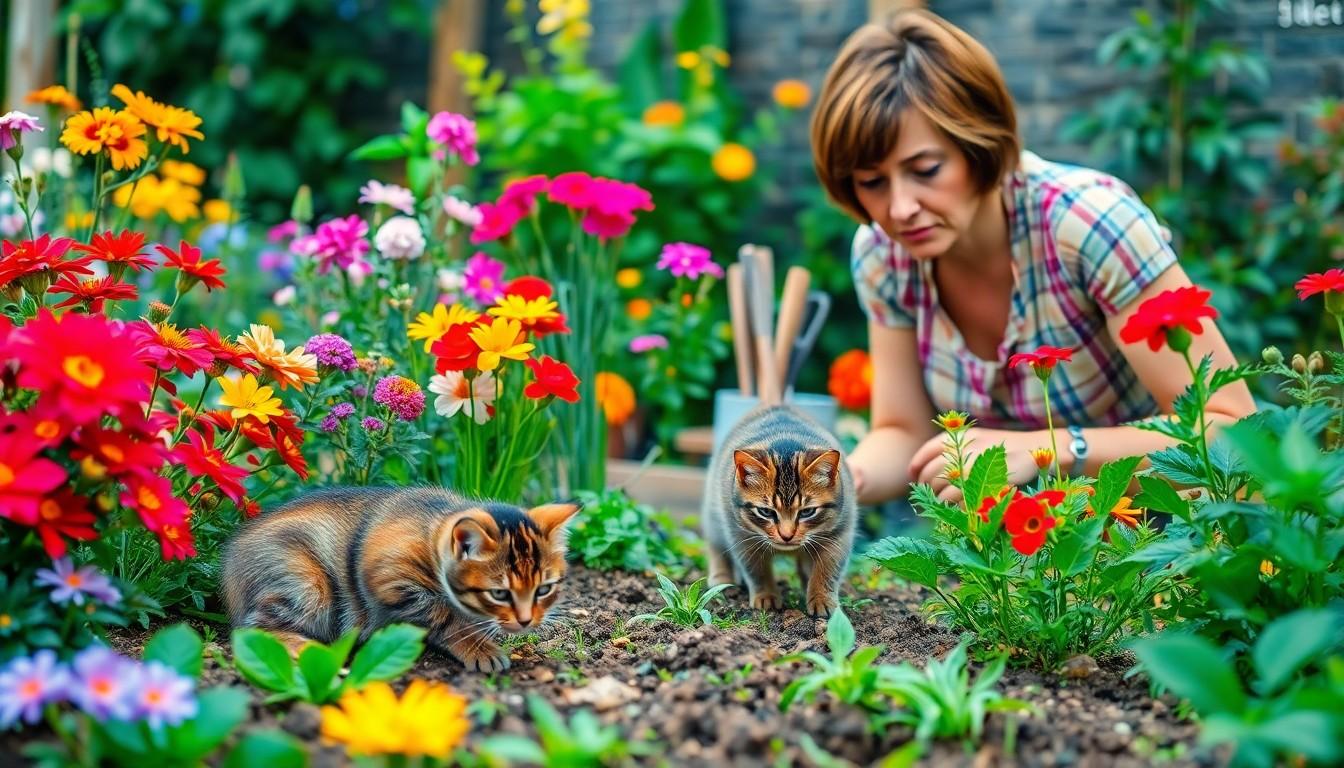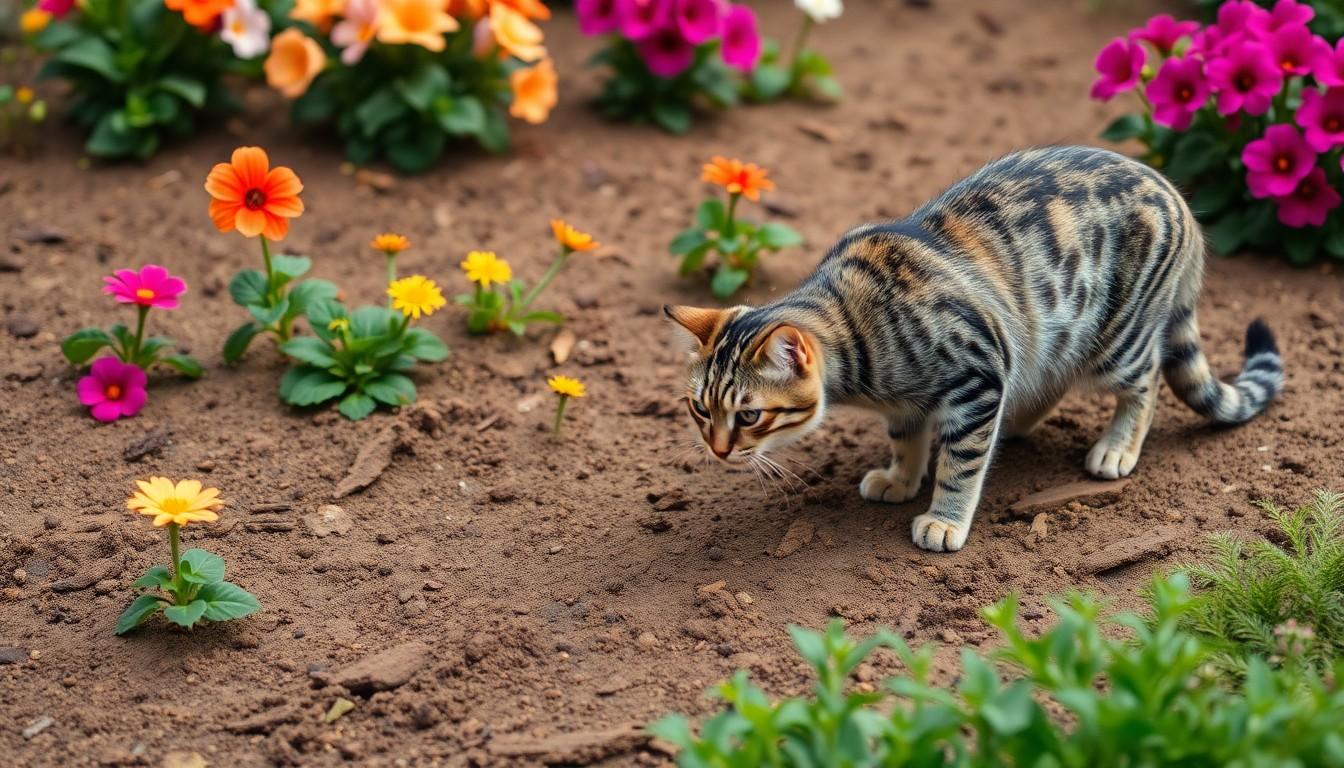The Best Fluffy Pancakes recipe you will fall in love with. Full of tips and tricks to help you make the best pancakes.

How to Stop Cats from Pooping in the Garden: Easy Tips and Tricks for a Clean Space
Cats can be adorable companions, but when they decide your garden is their personal litter box, it’s a whole different story. With their stealthy ninja skills, they’ll sneak in and leave behind little surprises that can ruin your hard work and garden aesthetics. Who knew that those fluffy furballs could turn into tiny garden wreckers?
Understanding the Problem
Finding cat waste in a garden presents multiple challenges for gardeners. Feline behavior drives them to seek out loose soil for digging and burying their waste, creating obstacles in outdoor spaces. Cats tend to view gardens as litter boxes, especially if the gardening area offers soft, earthy textures.
Maintaining the aesthetics of a garden suffers when cat droppings appear. Cats may return to the same spots repeatedly, making clean-up efforts critical to preserving garden conditions. Soil contamination occurs not only from feces but also from the pathogens they may carry, posing risks to plants and other animals.
In addition, cats might be attracted to gardens due to the presence of certain plants or nearby food sources. High scents from flowering plants ignite their curiosity, leading them back to revisit those areas. Therefore, understanding the motivations behind this behavior assists in finding practical solutions to manage the issue effectively.
Gardeners express frustration over the mess and potential harm to cultivated plants. Notably, keeping the area clean requires consistent intervention and deterrence strategies. Neglecting to address the problem allows it to escalate, creating long-term challenges for both plants and gardeners alike.
Addressing these concerns often involves observing cat habits and adjusting garden design. Implementing certain barriers can deter cats from accessing key areas, allowing plants to thrive without interference. Understanding these factors forms a crucial step toward creating a harmonious coexistence between gardens and cats.
Reasons Cats Poop in Gardens

Understanding why cats choose gardens as their bathroom can help gardeners find effective solutions. Several factors influence this behavior, including instinctual habits and environmental preferences.
Territorial Behavior
Territorial instincts drive many cats to claim certain areas. They may see gardens as prime spots to mark their territory. Feline scents from urine and feces serve as communication tools to other cats. Cats often return to familiar sites if they feel secure there. Observing these patterns can reveal much about a cat’s territory. Recognizing where cats frequently go can lead to more effective deterrent strategies.
Seeking Litter Alternatives
Cats often seek soft, loose soil for digging and burying waste. Gardens typically offer the right texture, making them appealing for this behavior. Uneven surfaces and newly turned soil draw in curious felines. Compounding this issue, a lack of accessible litter boxes may push indoor cats outdoors. Other scented plants might also pique their interest, encouraging exploration in the garden. Knowing these triggers helps gardeners create less inviting environments for feline visitors.
Effective Solutions
Implementing effective strategies helps keep cats from using gardens as litter boxes. Several options exist to deter this behavior while maintaining garden integrity.
Fencing and Barriers
Installing tall barriers effectively prevents cats from accessing gardens. Solid or wire fences create physical obstacles that can deter cats. Additionally, garden edging options, like prickly surfaces or mesh, discourage digging. Elevating areas with raised beds or pots helps create uninviting spaces for cats. Enclosing a garden can limit access and encourage cats to find alternative locations.
Natural Deterrents
Utilizing natural deterrents provides a humane approach. Strong scents, such as citrus, lavender, or rosemary, repel cats effectively. Placing citrus peels or planting aromatic herbs in strategic areas can deter them. Another option includes using ground coffee or vinegar-soaked cloths near entrance points. Additionally, motion-activated devices emitting bursts of water or noise can startle cats, encouraging them to stay away.
Chemical Repellents
Employing chemical repellents offers a direct deterrent method. Commercial products specifically designed to repel cats are available in pet stores. These solutions often contain unpleasant odors that deter cats. Always follow product guidelines for application to ensure safety for plants and wildlife. Regular reapplication keeps gardens protected, especially after rain.
Training Your Cats
Training cats to use designated areas minimizes their inclination to use gardens as litter boxes. Implementing effective litter box training establishes boundaries and encourages appropriate behavior.
Litter Box Training
Litter box training begins by selecting the right type of litter box. Ensure it’s spacious enough for the cat to move comfortably. Place the litter box in a quiet, accessible spot away from their food and water. Gradually introduce the litter, allowing the cat to explore its texture. Regularly clean the box to maintain hygiene and encourage return visits. Cats often prefer a clean area for elimination. Ensure that you have one litter box for each cat plus an additional box to promote consistent usage. Monitoring their transitions helps to identify any potential issues.
Positive Reinforcement Techniques
Positive reinforcement techniques significantly improve training success for cats. Reward desired behaviors with treats or praise immediately after they use the litter box. Consistent rewards encourage them to associate the box with positive outcomes. Gradually phase out treats as the cat develops a habit. Offering interactive playtime or additional affection also reinforces good behavior. Observing the cat’s preferences can enhance the training experience, increasing the likelihood of cooperation. Maintaining patience throughout the process establishes trust and consistency, contributing to long-term success.
Conclusion
Dealing with cats in the garden can be a challenge for any gardener. By understanding their natural behaviors and motivations, it’s possible to create a garden environment that deters unwanted visits. Implementing barriers and utilizing natural deterrents can significantly reduce the likelihood of cats using the garden as a litter box.
Training cats to use designated areas can also foster a more peaceful coexistence. With consistent effort and patience, gardeners can enjoy their outdoor spaces without the worry of feline interruptions. By taking proactive steps, it’s feasible to maintain both the beauty of the garden and the happiness of the cats in their lives.
